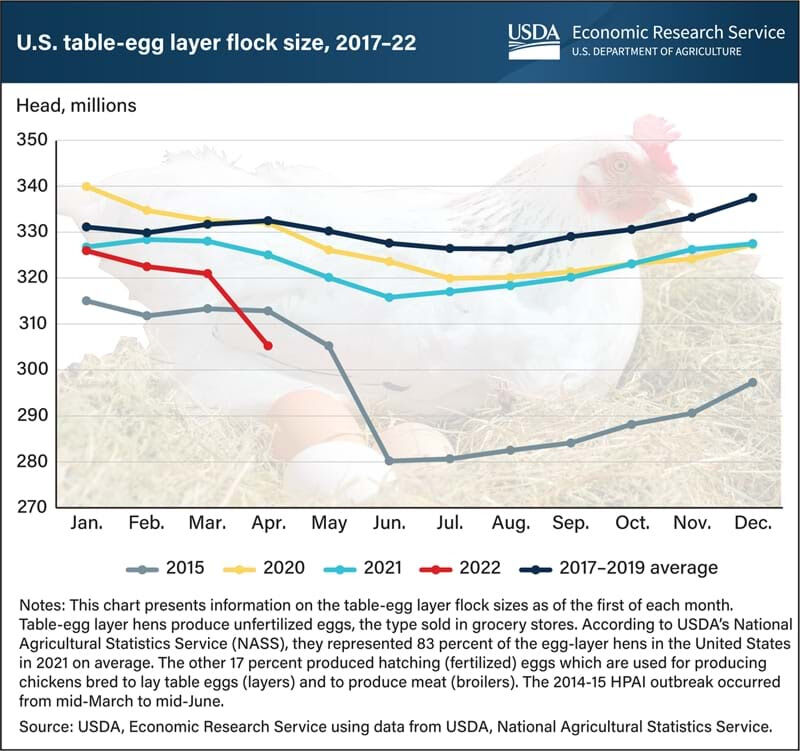Recent avian flu outbreak reduces U.S. egg-laying flock

On Feb. 8, the first case of Highly Pathogenic Avian Influenza since 2015 was detected in a commercial turkey operation in Indiana. Soon thereafter, HPAI cases were confirmed at commercial operations growing broilers (chickens grown for meat), turkeys, and egg-layers.
Because HPAI can spread quickly, USDA’s Animal and Plant Health Inspection Service depopulates flocks at operations where infections have been detected. Though the outbreak spread slowly in February, the number of HPAI cases increased rapidly in March, just ahead of Easter, when U.S. egg producers often expand their flocks to meet the demand for the upcoming holiday.
As of May 2, HPAI outbreaks have been reported in 164 commercial poultry operations, including 18 egg-laying facilities. Commercial egg-laying hens represent a majority of the birds affected.
On April 1, the U.S. table-egg layer flock was estimated at 305.2 million, reflecting, in part, the 16.9 million birds lost to HPAI in March. APHIS reported that an additional 10.7 million layers were affected in April. As of May 2, more than 29 million layers had been lost to HPAI.
During the largest U.S. HPAI outbreak, in 2014–2015, the industry lost 43 million egg layers. At the time the first major cases of the 2022 outbreak in commercial egg layers were confirmed, flock sizes were already smaller than in previous years, including their 2017–2019 pre-pandemic levels.



